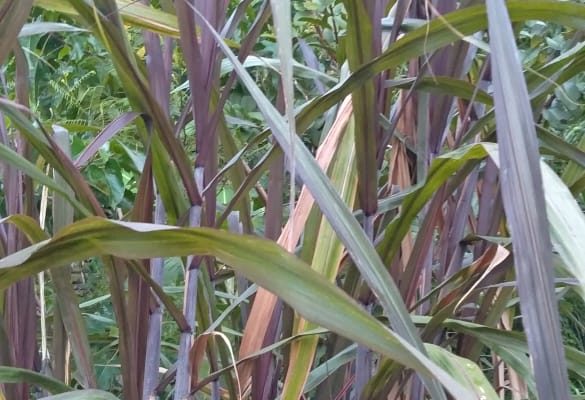 Scientific Name : Saccharum Officinarum
Scientific Name : Saccharum Officinarum
Bahasa Indonesian : Tebu
Batak :Tobu
Basic Information:
Sugarcane or sugar cane refer to several species and hybrids of tall perennial grasses in the genus Saccharum, tribe Andropogoneae, that are used for sugar production. The plants are two to six metres (six to twenty feet) tall with stout, jointed, fibrous stalks that are rich in sucrose, which accumulates in the stalk internodes. Sugarcanes belong to the grass family Poaceae, an economically important flowering plant family that includes maize, wheat, rice, and sorghum, and many forage crops. It is native to the warm temperate to tropical regions of Southeast Asia and New Guinea.
Sugarcane is the world’s largest crop by production quantity, with 1.8 billion tonnes[clarification needed] produced in 2017, with Brazil accounting for 40% of the world total. In 2012, the Food and Agriculture Organization estimated it was cultivated on about 26 million hectares (64 million acres), in more than 90 countries.
About 70% of the sugar produced globally comes from a species of sugarcane called Saccharum officinarum and hybrids of this species.[1] All sugarcane species can interbreed, and the major commercial cultivars are complex hybrids.[2]
Sugarcane accounts for 79% of sugar produced; most of the rest is made from sugar beets. While sugarcane predominantly grows in tropical and subtropical regions, sugar beets typically grow in colder temperate regions.
Sucrose (table sugar), extracted from sugarcane in specialized mill factories, is either used as raw material in the food industry or fermented to produce ethanol. Products derived from sugarcane include falernum, molasses, rum, cachaça, and bagasse. In some regions, people use sugarcane reeds to make pens, mats, screens, and thatch. The young, unexpanded flower head of Saccharum edule (duruka) is eaten raw, steamed, or toasted, and prepared in various ways in Southeast Asia, including Fiji and certain island communities of Indonesia.[3]
Sugarcane was an ancient crop of the Austronesian and Papuan people. It was introduced to Polynesia, Island Melanesia, and Madagascar in prehistoric times via Austronesian sailors. It was also introduced to southern China and India by Austronesian traders at around 1200 to 1000 BC. The Persians and Greeks encountered the famous “reeds that produce honey without bees” in India between the 6th and 4th centuries BC. They adopted and then spread sugarcane agriculture.[4] Merchants began to trade in sugar, which was considered a luxurious and expensive spice, from India. In the 18th century AD, sugarcane plantations began in Caribbean, South American, Indian Ocean and Pacific island nations and the need for laborers became a major driver of large migrations of people, some voluntarily accepting indentured servitude[5] and others forcibly exported as slaves.[6]
